As the photos clearly show, it takes a large number of middle-aged people with sticks, a very large crane, a minimum of A.M. alcoholism, and a steady hand on the digital camera.
1) Deep thought...how heavy is it? (The answer turned out to be 29,500 lbs., 500 lbs. less than the skipper had guessed to satisfy a space on a form.)
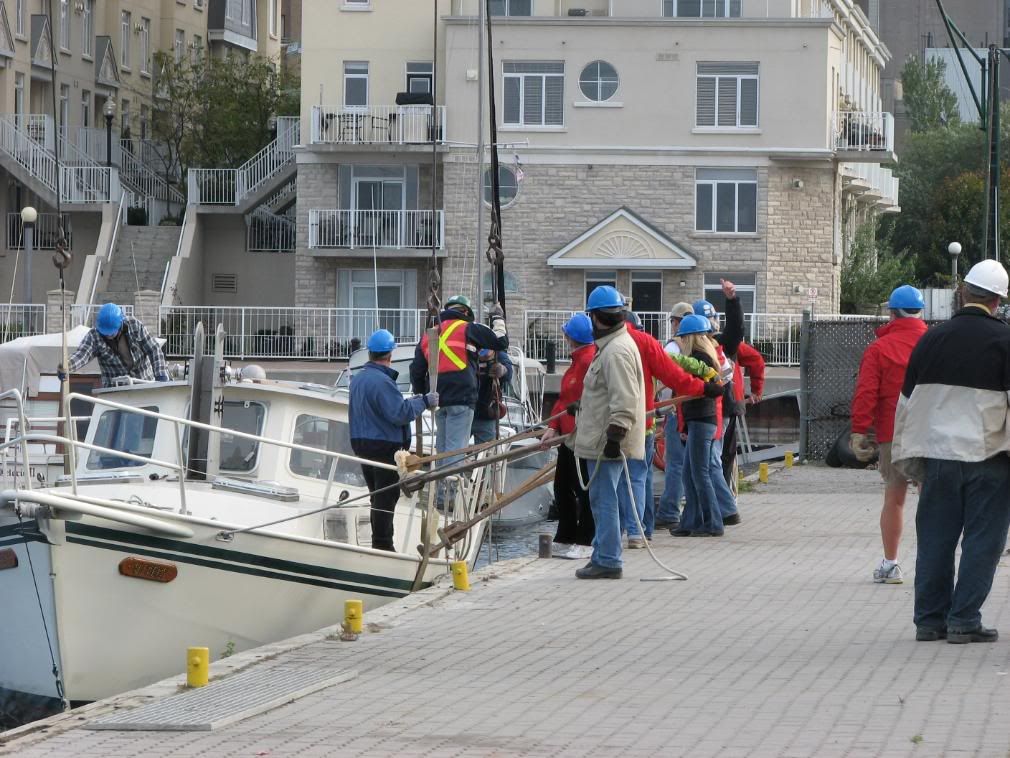
2) You don't say? This calls for more deep thought.
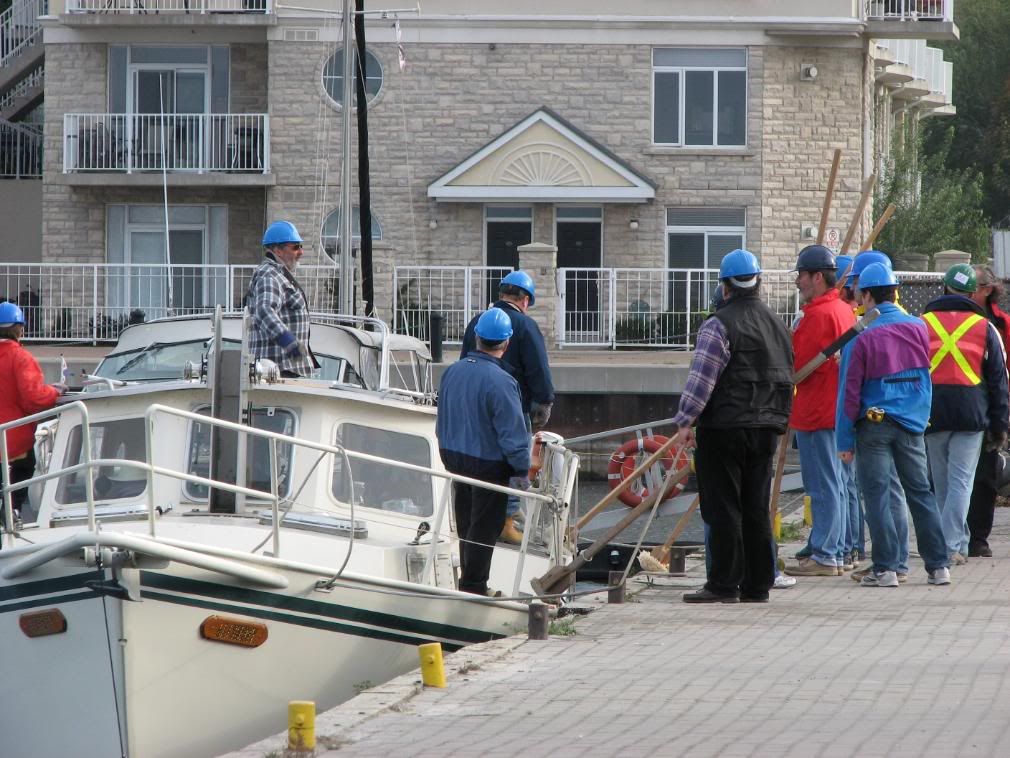
3) Right. Raise high the chalice!
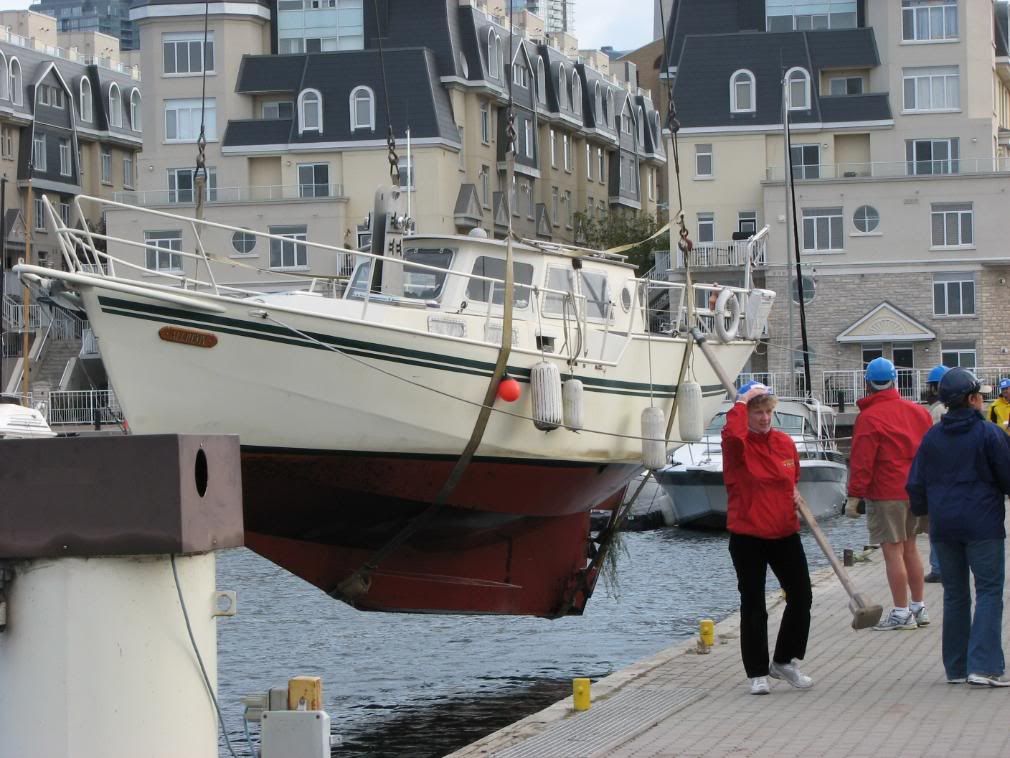
4) A quick look confirms the anti-foul seems to have worked.
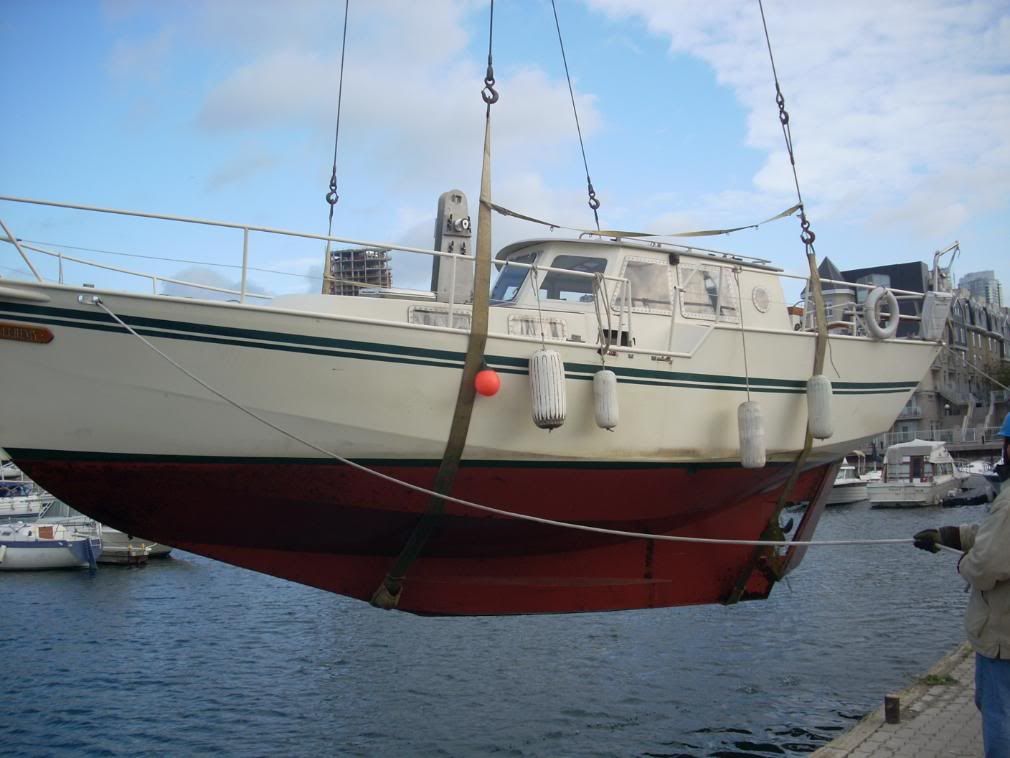
5) The push-stick, the steel boat and the tourist trap: A senseless conflation of photographic composition, really.
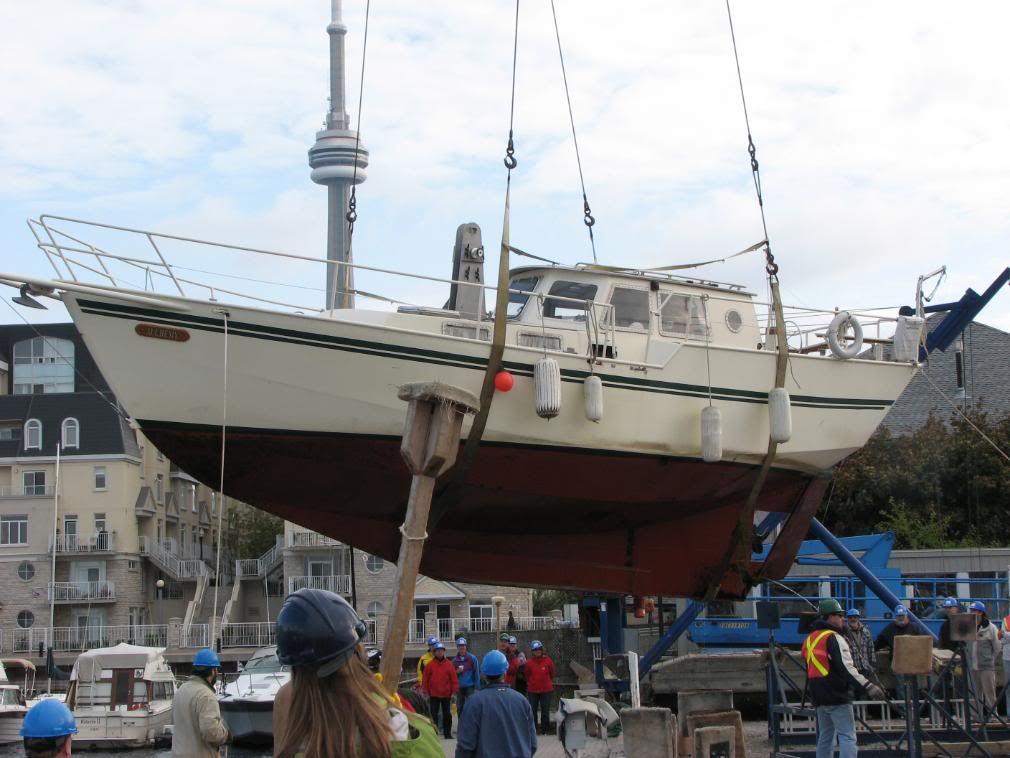
6) This single individual is doing almost none of the lifting. Quite something, physics, isn't it?
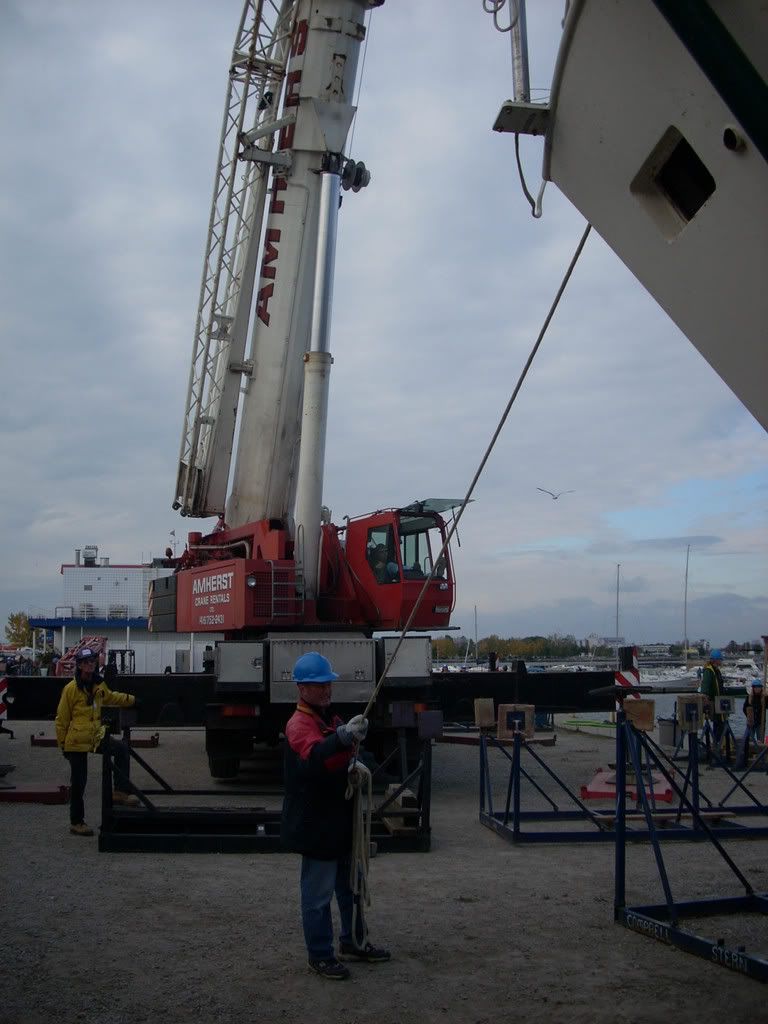
7) Safely down, and nothing damaged. Anxiety....receding....
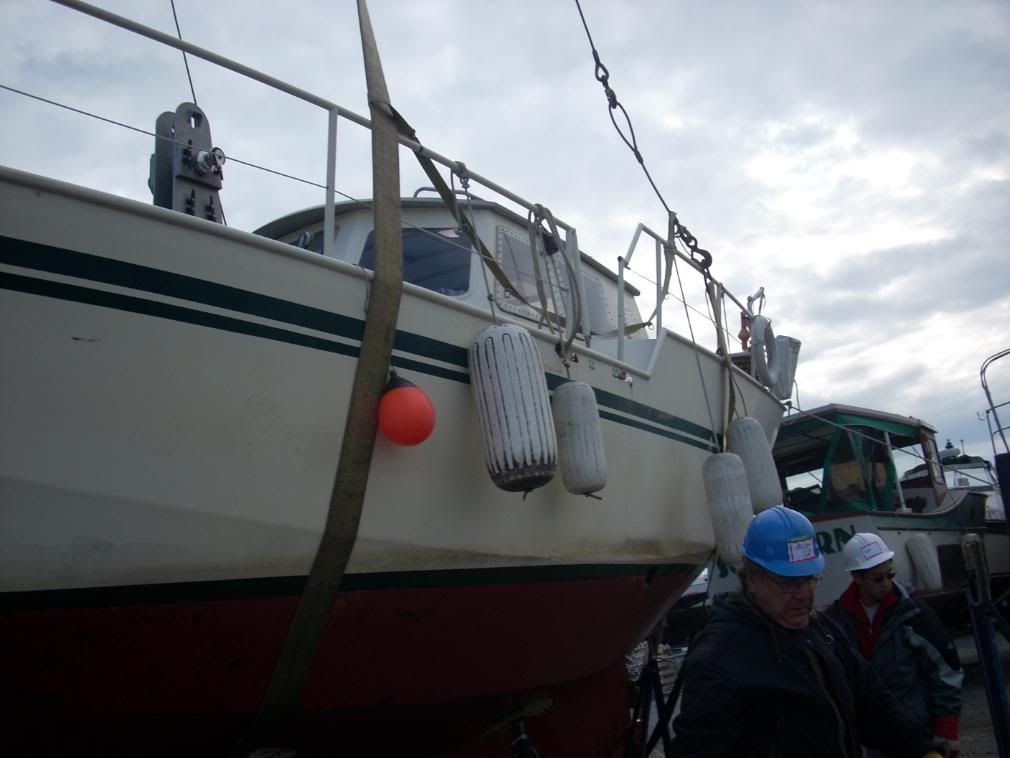





2 comments:
Nice looking practical boat, Ideal for what you are about to do. How do you feel about the largish wheelhouse windows? I have them on my vessel and they seem to flex but not break in up to 8s. What make is she? the hull looks like Roberts and the topsides look like De-groot (the best of both worlds I would say)
As mentioned below, it was drawn by an N.A. named Phil Friedman in the early '80s and built in 1988 here in Ontario. It's never seen salt, which is quite rare for a boat of this evidently North Sea-inspired type.
The trio of forward windows are tempered glass: the port and starboard are fixed and the center one opens upward. I will be getting storm shutters for them, as well as replacing the simple Lexan dropboard hatch at the entrance to the pilothouse in favour of a doggable and gasketed "Dutch door" that will allow the upper half to be lashed open for air and chat in all but the most extreme conditions.
The side windows are through-bolted chunks of 1/2" thick Lexan through steel framed sides and can probably withstand light arms fire. Nonetheless, they too will have storm shutters made. All the fixed portlights are 1/2" Lexan. The small (10") circular portlights will be replaced with SS opening ports of SS and thick glass. This is to get some cross-ventilation in the pilothouse in addition to the opening 7 x 14 Atkins and Hoyle hatches in the pilothouse roof, which obviously have to be closed in bad weather.
Post a Comment